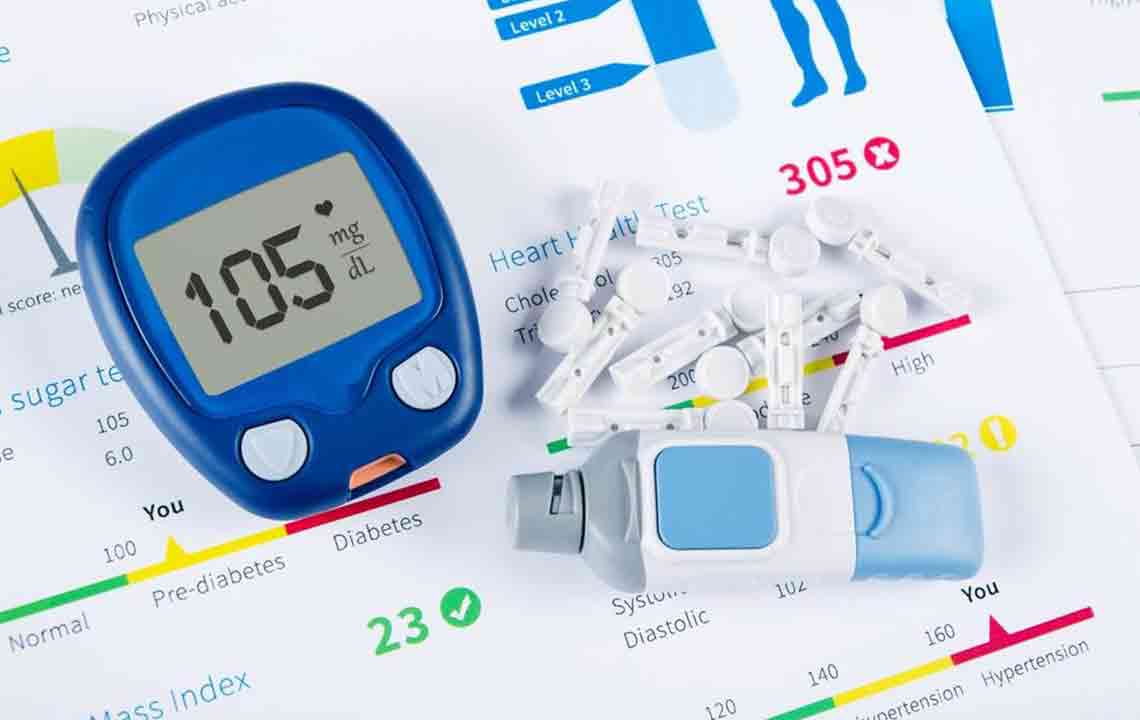Monitor Your Diabetes with a Blood Sugar Levels Chart
People with diabetes should monitor their blood sugar levels regularly at home. This is where the blood sugar levels chart comes in picture.
What is a blood sugar levels chart?
Blood sugar level charts are a point of reference with which you can compare your blood sugar test results.
Diabetes treatment plans, often, involve keeping blood sugar levels close to normal.

The blood sugar levels chart provides the standard normal and abnormal levels of blood sugar for patients with diabetes and those without diabetes. Blood sugar level is the amount of glucose present in your blood at any given time.
You can simply compare your test results with the relevant value on the chart to assess the effectiveness of your diabetes management plan. As such, blood sugar levels chart assume importance as they provide you with a preliminary warning when it is time to consult your doctor and to prevent diabetes complications such as eye disease, nerve damage.
Understanding the blood sugar levels chart
Blood sugar levels vary throughout the day. They are the lowest before breakfast and in the hours before meal rising gradually after a meal. Blood sugar levels may also differ from person to person. For individual differences, the blood sugar levels chart provide an acceptable range rather than a single value.
The acceptable ranges of blood sugar levels of people with diabetes are higher than the normal range for a non-diabetic individual.
In our country, blood sugar charts typically report sugar levels in milligrams per deciliter (mg/dL). The recommended levels of blood sugar under the A1C test are frequently included in blood sugar levels chart. The A1C test is a standard blood test used to diagnose type 1 and type 2 diabetes. It is also used to monitor the effectiveness of your diabetes management plan.
The A1C test result provides an average of your blood sugar level for the past two to three months. The test measures the percentage of your hemoglobin that is coated with sugar. The test results often include an average of your blood sugar level in mg/dL.
There is a slight variation in the recommended range of blood sugar levels for people with Diabetes by the American Diabetes Association (ADA), Joslin Diabetes Center (JDC), and American Association of Clinical Endocrinologists (AACE). Below is given a basic breakdown of the blood sugar levels chart for children up to 6 years of age. This has been classified as per the time of checking blood sugar levels:
Fasting (before breakfast)
Blood sugar levels for those without diabetes: 70–99 mg/dL
Target blood sugar levels for those with diabetes: 80–130 mg/dL (ADA); 70–130 mg/dL (JDC); less than 110 (AACE)
Before meals
Blood sugar levels for those without diabetes: less than 110 mg/dL
Target blood sugar levels for those with diabetes: 70-130 mg/dL (JDC)
2 hrs after a meal
Blood sugar levels for those without diabetes: less than 140 mg/dL
Target blood sugar levels for those with diabetes: less than 180 mg/dL (ADA & JDC) …less than 140 (AACE)
Bedtime
Blood sugar levels for those without diabetes: less than 120 mg/dL
Target blood sugar levels for those with diabetes: between 90 – 150 mg/dL (JDC)
A1C levels
Blood sugar levels for those without diabetes: less than 5.7 percent
Target blood sugar levels for those with diabetes: less than 7 percent
Blood sugar levels chart for children between the age of 6 and 12
The normal blood sugar levels for children between 13 and 19 years of age are the same as that for adults.The target blood sugar levels for a person with diabetes may depend on some other factors including:
- Age and life expectancy
- Other health conditions
- The time for which an individual has had diabetes
- Another cardiovascular disease
- Any known damage to the eyes, kidneys, blood vessels, brain, or heart
- Low blood sugar level unawareness
- Stress
Specific forms of temporary diabetes, such as gestational diabetes, also have different recommendations for acceptable levels of blood sugar. Many types of blood sugar monitors are available for checking the blood sugar levels at home. Traditionally, blood sugar monitors available in the U.S. used blood obtained from finger-prick and testing strips. However, the latest monitors rely on plasma glucose counts, which give a more accurate reading of daily glucose levels.It is advisable to perform several consecutive blood glucose tests instead of relying on a single measurement to get an accurate picture. You should maintain a blood sugar levels chart and compare it with the recommended targets regularly to gain the upper hand on your diabetes. Below mentioned is a brief breakdown of what the ideal blood sugar levels should be for those without diabetes.
Fasting (before breakfast)
Blood sugar levels for those without diabetes: 100 mg/dL–180 mg/dL
Bedtime
Blood sugar levels for those without diabetes: 110 mg/dL–200 mg/dL
Fasting or before breakfast
Blood sugar level in mg/dL: 60–90 mg/dL
Before meals
Blood sugar level in mg/dL: 60–90 mg/dL
1 hour after meals
Blood sugar level in mg/dL: 100–120 mg/dL


